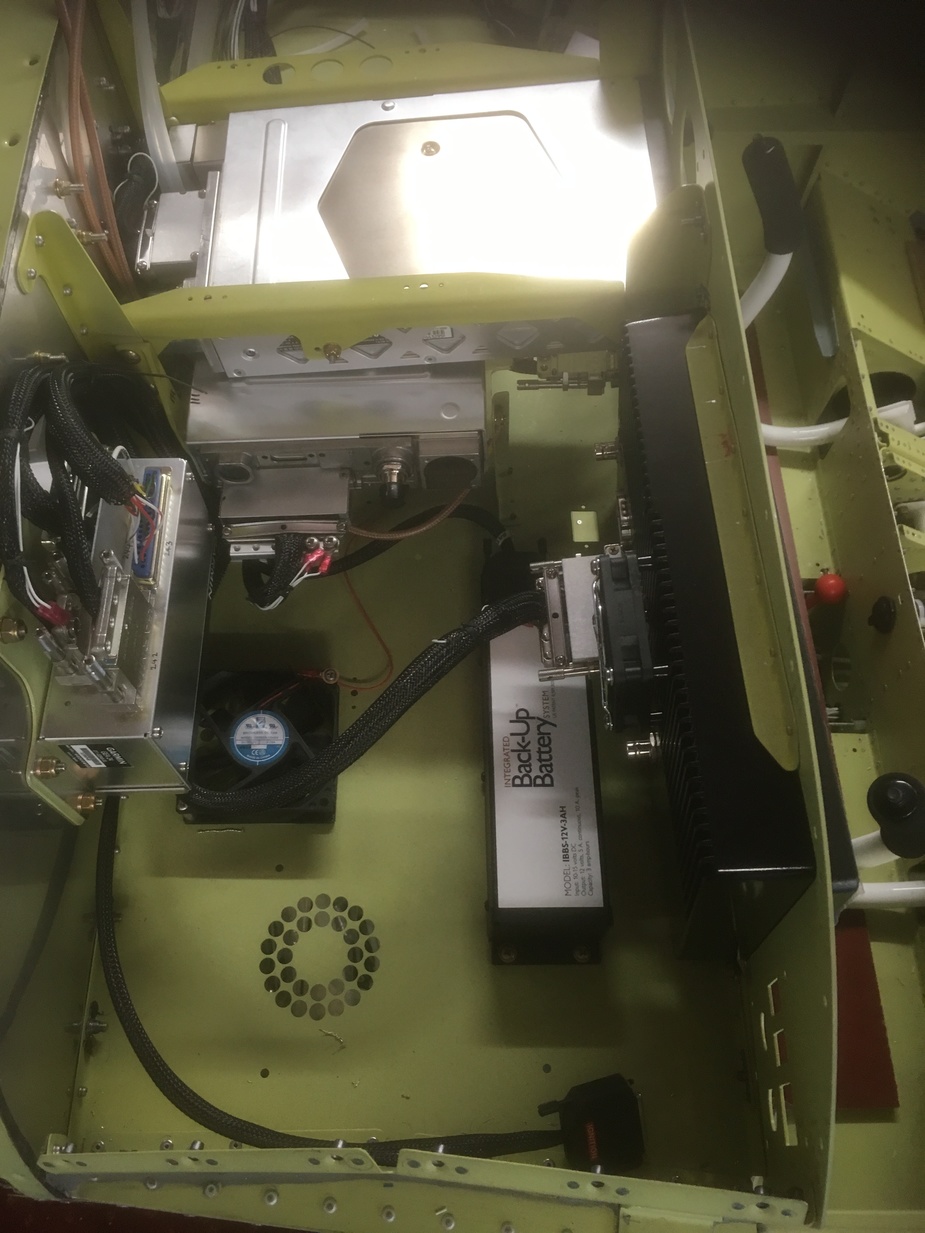
Having rebuilt the whole CB panel (with a slightly higher density, to make room for some new CBs) I found about 7 more of those “not going anywhere” 1/4" terminals shown in post #01.
The wires were labelled and looking up the labels in the Socata wiring manual I see they are power supply wires to the ADF, DME, NAV1, etc. But all those boxes work! So I wonder what those wires do. It looks like somebody had been there (at Socata, or Air Touring) and wired up the supplies using other wires and left these in the harness. Admittedly leaving old wires in place is reasonable (because it takes only a few cable ties in an inaccessible place and you will never be able to pull unused wires out) but it still looks very strange.
One observation which may be relevant is that the 1/4" terminals could push on only onto the white plastic busbars – visible here. But these busbars are the BUS1/BUS2/BUS3 buses before the avionics master, and no way could you power any normal avionics that way because you would blow them up when the starter motor is energised (de-energised, to be more accurate). So I wonder if those wires pre-date the time when the TB series acquired an avionics master switch? The Socata TB wiring diagrams are largely generic and don’t reflect any particular aircraft…
Peter wrote:
It makes a neat job and protects the wires from abrasion, but I find it a real bugger to slide on, if the harness is of any significant length.
One trick is to push a small wooden ball through the sleeve – drill a hole in the ball, and use it to pull a few threads through the sleeve, which you later can use to pull through the wires. Always make sure one thread remains until the last wire is done, you can always use that one to pull though more threads.
(I do this when sleeving for a PC build, where runs are quite short, but this should work for any length)
Peter wrote:
It makes a neat job and protects the wires from abrasion, but I find it a real bugger to slide on, if the harness is of any significant length.
Well, that’s the advantage of a homebuilt. You just don’t have to economically justify labourintense means…
Interesting that you use that braided sleeve… It makes a neat job and protects the wires from abrasion, but I find it a real bugger to slide on, if the harness is of any significant length.
Some homebuilts will have neat wiring:

I sometimes wonder how much weight would be saved by pulling out the dead KCS-55 slaved compass system wiring I still have in place. Probably only a few kg at most… not worth doing, and some of the wires become useful in the future.
I have seen worse than the above in one kitplane, with wires wrapped around a (clear plastic) fuel pipe. That was a brand new build. I don’t know why the builder is not given better instructions on the real basics like that, but then laying out the panel and wiring it makes up the bulk of the required “51%” 
I stuck a camera up behind my panel last weekend (basically looking to see what kind of space I had to replace the fuse box with circuit breakers), I think refreshing the wiring is going to be one of the projects carried out at permit revalidation time, there’s decades old leftovers in there I’m not sure are actually connected to anything. Not quite as messy as the Europa pictured above but not to my satisfaction.
You think that lots bad. Take a look behind the panel on a permit aircraft and you’ll find every bodge known to man. To be fair a lot of G A aircraft are no better. Given the average age of some of the C of A aircraft and most electrical work is not done by an “electrician”/avionics engineer its no surprising. Splice after splice after splice. Saying that the quality of some of the wiring that is on new aircraft isn’t good out of the factory. I work on new business jet and the quality isn’t there. I used to work for British Aerospace building airliners and the wiring was pretty good.
This was what I was confronted with when I removed the instrument panel on my Europa. I’m now doing a re-wire and new panel
Oh yes – that must be it.
The two fuseholders bundled into the harness are still quite funny… It takes a lot of effort to reach them, starting with undoing a number of self-tapping screws.